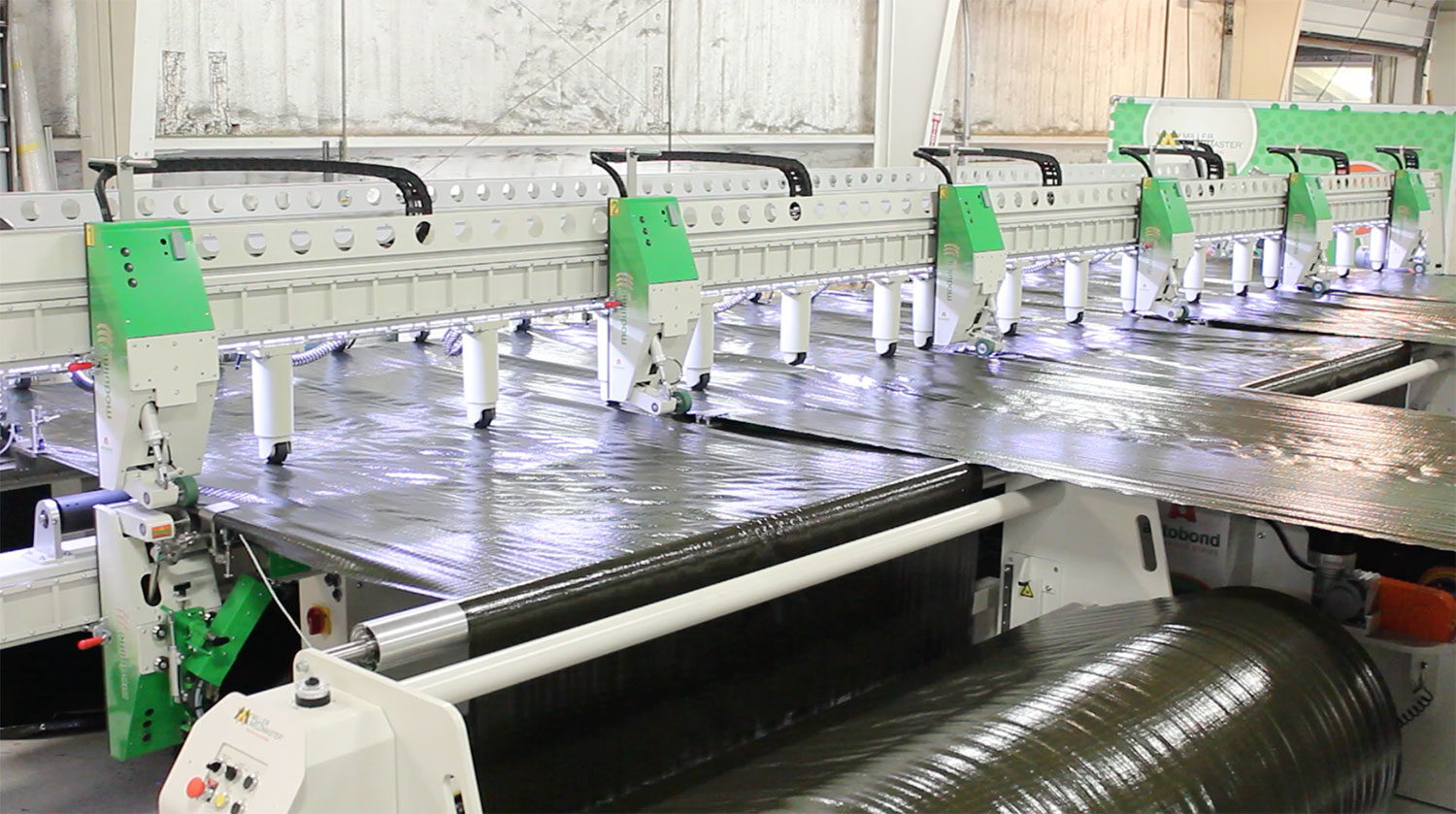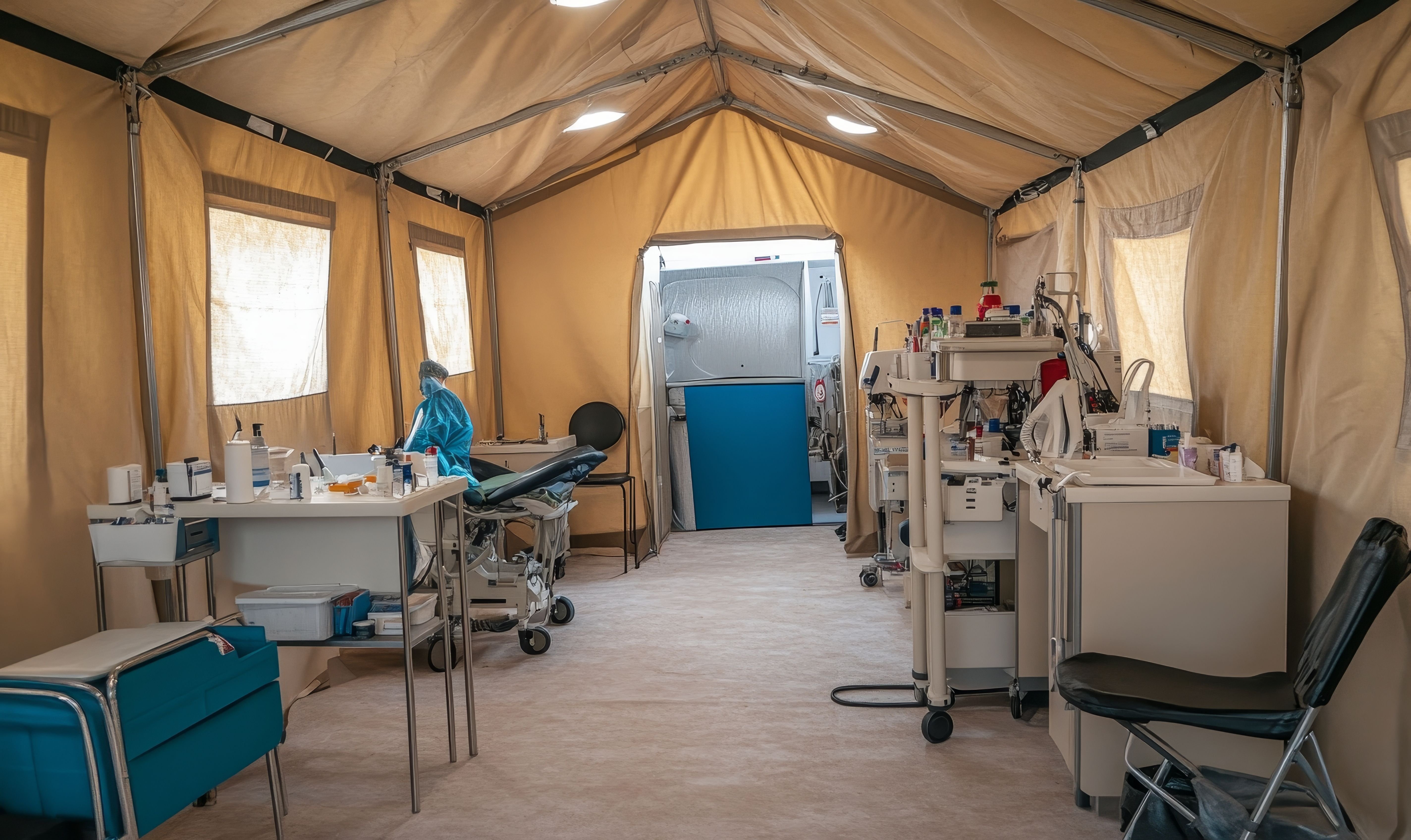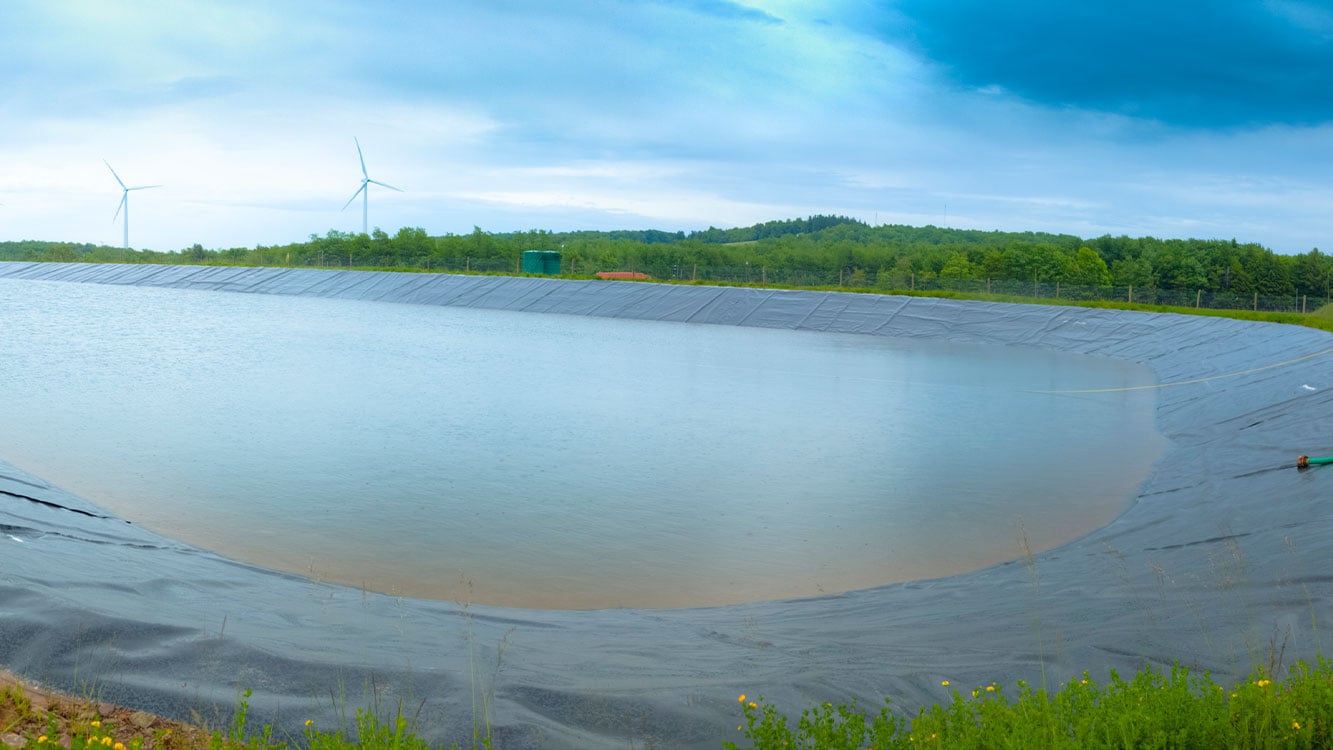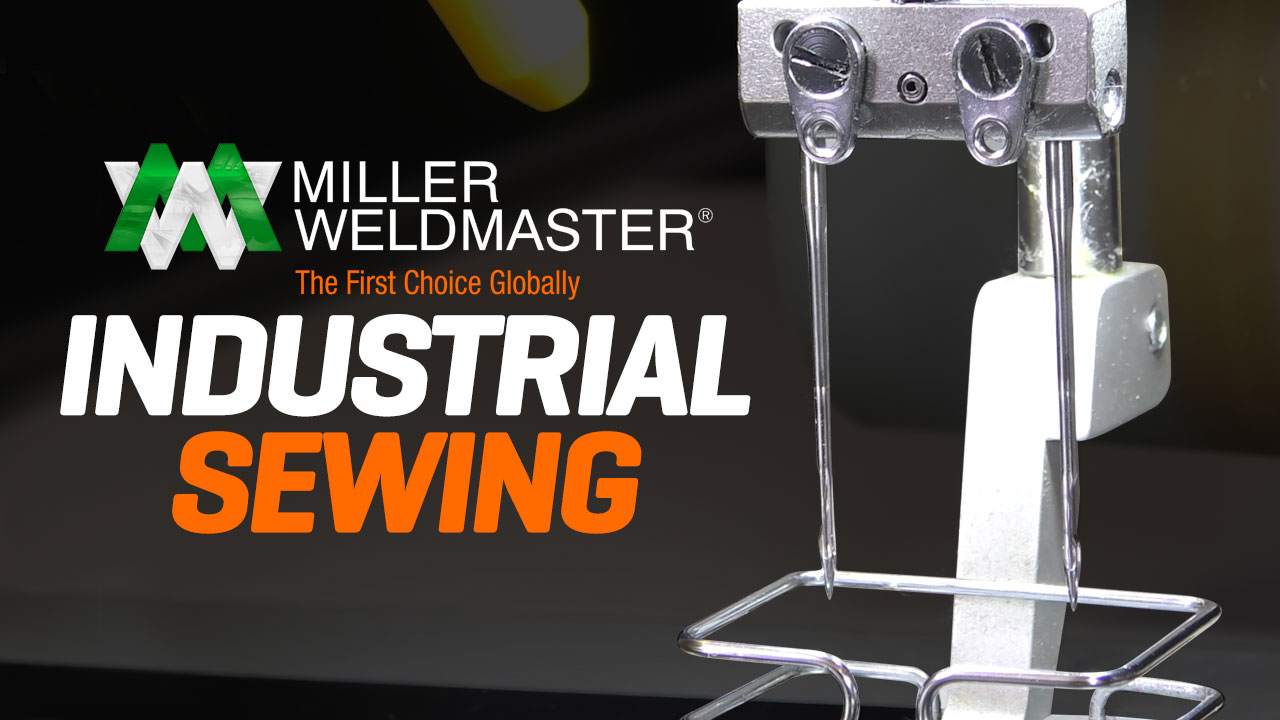Custom converting equipment is essential in the world of fabric welding, providing solutions that cater to specific industry needs. This technology involves a variety of machines designed to cut, bond, and finish materials in ways that standard equipment cannot. For a deeper dive into how these technologies can transform your operations, visit our page on custom converting equipment.
What Is Custom Converting Equipment?
Understanding the Role of Custom Converting Equipment
Custom converting equipment includes machines specifically designed to handle unique production tasks in fabric welding. These machines often combine functions like cutting, sealing, and finishing into one streamlined process, enhancing productivity and efficiency.
Key Differences Between Custom and Standard Converting Equipment
Unlike standard equipment, custom machines are tailored to fit the precise needs of a project or industry. This might involve modifications to accommodate different sizes, the integration of specific features, or compatibility with particular materials—all of which provide a significant efficiency and output quality advantage.
Industries Benefiting from Custom Converting Equipment
Industries such as automotive, aerospace, textiles, and medical devices benefit significantly from custom converting equipment. These sectors require high precision and adaptability due to the varied nature of their materials and the critical function of their end products.
Types of Custom Converting Equipment
Overview of Converting Equipment Types
Custom converting equipment encompasses a range of machine types, including slitters, laminators, and welders. Each type serves a specific function in the production line:
- Slitters cut large rolls of material into narrower widths.
- Welders join materials at the seams using heat and pressure.
Features and Use Cases of Different Equipment Types
Each type of equipment comes with specialized features that optimize its operations. For example, custom welders might include advanced temperature control systems to handle various fabric types without causing damage.
Matching Equipment Types with Welding Needs
Choosing the right type of equipment involves understanding the material properties and desired outcomes of the welding process. Material thickness, production speed, and environmental considerations are all crucial factors in this decision.

Key Features and Components of Custom Converting Equipment
Components of Custom Converting Equipment
The main components of custom converting machines typically include rollers for material handling, heating elements for welding, and sophisticated control systems that ensure precision and repeatability.
Advanced Features for Enhanced Efficiency
Modern custom converting machines incorporate advanced features such as touchscreen controls, programmable settings, and automated feed systems. These significantly enhance productivity and reduce the likelihood of human error.
Benefits of Customization Over Standard Features
Customization allows for adjustments in the machine's design to meet specific production needs, which can lead to better resource utilization, reduced waste, and improved product quality.
Benefits of Custom Converting Solutions
Productivity Improvements Through Custom Solutions
Custom converting equipment is meticulously designed to streamline specific production processes. By tailoring each machine to fit precise operational requirements, manufacturers can optimize workflows, reduce bottlenecks, and enhance throughput. This tailored approach enables a seamless production flow, often incorporating automation that reduces the need for manual intervention. The result is a significant boost in productivity, allowing for more output in less time, with fewer resources wasted. These improvements are not just about speed but also about the better utilization of space and materials, leading to more efficient manufacturing cycles
Cost-Effective of Custom Converting Equipment
The upfront cost of custom converting equipment is generally higher than that of off-the-shelf models due to the specialized engineering and manufacturing involved. However, the long-term financial benefits can far outweigh these initial expenses. Custom equipment is designed to be highly efficient, which reduces waste materials and energy use. Additionally, the precise operations reduce rework and material flaws, minimizing costly errors. Over time, these factors contribute to lower operational costs, making the investment in custom equipment financially justifiable. The tailored features of the equipment can also adapt to evolving production needs, providing a level of future-proofing that standard equipment cannot, thereby extending the machinery's useful life and maximizing the return on investment.
Quality Control and Consistency with Custom Equipment
In industries where quality and precision are paramount—such as pharmaceuticals, aerospace, and automotive—custom converting equipment offers a crucial advantage. These machines ensure that each product batch meets stringent quality standards, maintaining consistency across production runs. The ability to fine-tune specific machine parameters for particular materials or products means that manufacturers can achieve a level of product uniformity that standard equipment typically cannot provide. This high level of consistency helps prevent defects and ensures that all products meet both industry standards and customer expectations. Such reliability not only enhances the brand's reputation but also reduces the likelihood of costly recalls or customer dissatisfaction.
By leveraging custom converting solutions, companies not only enhance their operational efficiency and product quality but also align their production practices with sustainable and cost-effective principles. These advantages make custom equipment a valuable asset in any manufacturer's toolkit, especially in sectors where precision and efficiency are crucial for success.
Custom Converting Equipment Applications
Common Projects Utilizing Custom Converting
Custom converting equipment is designed to handle a diverse array of projects, making it indispensable in many industries. For example, in the automotive sector, these machines are used for cutting and assembling complex interior components like dashboard covers, upholstery, and soundproofing materials. In the medical field, custom equipment is crucial for producing sterile, precise cuts in materials used for medical textiles, such as wound care fabrics and barrier gowns.
This versatility also extends to industries like aerospace, where precision in cutting and assembling lightweight materials for insulation and seating is critical. The ability to customize the converting process allows manufacturers to meet exact specifications, thereby ensuring compliance with strict industry regulations and enhancing functionality and safety of the final products
Suitable Products and Materials
Custom converting machines excel in processing complex materials that standard machines might not handle effectively. These include:
- Composites: Often used in automotive and aerospace industries for their strength and lightweight properties, requiring precise cutting and bonding techniques.
- Reinforced Fabrics: Used in construction and safety equipment, these materials benefit from the precise control over cutting and sealing processes that custom machines offer.
- Multilayer Textiles: In the fashion and technical apparel sectors, handling and processing multilayer textiles without damaging them is crucial, something that custom converting equipment can ensure with its precise adjustments and settings.
The ability to adjust machine settings for different material types and thicknesses without compromising on speed or quality is a significant advantage, especially in industries where material properties can vary widely.
Scenarios Requiring Specialized Equipment
There are numerous scenarios where standard converting equipment may not suffice, particularly when unique product specifications or innovative materials are involved. For instance:
- High-Precision Requirements: In electronics, where components like flexible circuits and battery films require exact tolerances.
- Variable Production Runs: In consumer goods, where promotional items or limited edition products may need quick, adaptable setup changes that standard machines cannot accommodate.
- Sensitive Materials Handling: For products like high-performance sports apparel or weather-resistant outdoor gear, where material integrity during the converting process is paramount to the functionality of the final product.
Custom converting equipment provides a tailored solution that standard machines cannot match, especially when it comes to accommodating the unique demands of specialized products and materials. This capability not only ensures quality and compliance but also enhances innovation, allowing companies to explore new materials and complex product designs with confidence.
Choosing the Right Converting Equipment
Factors for Selecting Converting Equipment
Selecting the right converting equipment involves several crucial considerations that can significantly impact production efficiency and product quality:
-
Compatibility with Various Fabrics: Different industries use diverse materials, each with unique properties that affect how they are processed. For instance, the textile industry may need equipment capable of handling delicate fabrics without causing damage, while the automotive industry may require machines that can process tougher, composite materials.
-
Production Volume: The equipment must be able to handle the production volume required by your operations without compromising on quality. This includes considering the machine's speed, efficiency, and durability under continuous operation.
-
Flexibility for Future Needs: The potential for upgrades and adjustments is crucial, especially in rapidly evolving industries. Equipment should be adaptable to future technological advancements or changes in production requirements. This flexibility can protect your investment and ensure the machine remains valuable as your business grows and evolves.
Customization Options for Tailored Solutions
Customization options are what set custom converting equipment apart from standard models, offering enhanced capabilities tailored to specific production needs:
-
Integration of Various Welding Technologies: Depending on the materials and products being fabricated, integrating different welding technologies such as hot air, hot wedge, or radio frequency can provide the precision and quality required for specific applications
-
Custom Material Handling Systems: To enhance automation and efficiency, custom material handling systems can be designed to align with specific workflows, thereby reducing labor costs and minimizing the risk of material damage during processing, such as unwinds and rewinds.
-
Advanced Diagnostic Tools: Incorporating diagnostic tools can help in monitoring equipment performance, predicting maintenance needs, and quickly troubleshooting issues, thereby reducing downtime and maintaining high productivity.
Important Questions to Ask
When choosing a provider for your converting equipment, it’s essential to engage in detailed discussions to ensure their offerings meet your specific needs:
-
Support Options: Inquire about the types of support services offered, such as training, maintenance, and technical support. Reliable post-purchase support can significantly influence the overall effectiveness and lifespan of the equipment.
-
Upgrade Opportunities: Discuss the potential for future upgrades to the equipment. This is crucial for keeping the machinery up-to-date with the latest technologies and production practices.
-
Future Modifications: Understanding the scope for modifications can help you adapt the equipment to future changes in production or material types, ensuring long-term utility and efficiency.
By considering these factors and engaging deeply with potential equipment providers, manufacturers can ensure that they invest in converting equipment that not only meets their current needs but also adapts to future challenges and opportunities.
Fabric Welding Customization and Automation
Customization as a Driver for Automation
Customization in fabric welding equipment plays a pivotal role in enhancing automation across various production lines. By integrating custom features tailored to specific manufacturing requirements, companies can automate complex processes that traditionally require manual intervention. This transition to automation not only streamlines production but also minimizes human error, leading to a more consistent and reliable output.
For instance, customized machines can include specific welding patterns or automatic material handling systems that adjust parameters dynamically based on the material being processed. Such features reduce the need for constant supervision and manual adjustments, thereby decreasing labor costs and increasing overall operational efficiency.
Efficiency Gains Through Automation
Automation enabled by custom converting equipment can dramatically enhance efficiency, particularly in environments with high-volume production demands. Automated systems can perform repetitive tasks at a faster rate than human workers and can operate continuously without fatigue. This capability is crucial for meeting large orders and tight deadlines, significantly boosting productivity.
Moreover, the precision of automated systems ensures that each product is manufactured to the same standards, enhancing product quality across the board. Automated fabric welding machines can also adapt quickly to changes in production specifications, allowing for rapid shifts between different products or designs without significant downtime for reconfiguration.
Overall, the customization and subsequent automation of fabric welding equipment represent a significant investment in increasing the efficiency and scalability of production processes. This strategic approach not only supports current production needs but also provides the flexibility to adapt to future market demands and technological advancements.
Custom Converting Equipment Maintenance Tips
Maintenance Best Practices
Regular maintenance is essential for maximizing the operational efficiency and longevity of custom converting equipment. Establishing a routine maintenance schedule based on the manufacturer's recommendations is crucial. This involves regular inspections, cleaning, and servicing of key components such as motors, belts, and electrical systems to ensure they are running smoothly and efficiently. Lubrication of moving parts and checking for wear and tear are also vital to prevent unexpected breakdowns and extend the life of the equipment. Implementing a proactive maintenance strategy helps in identifying and rectifying issues before they escalate into costly repairs.
Signs That Equipment Needs Servicing
Early detection of potential problems can significantly reduce the risk of equipment failure and costly downtime. Signs that custom converting equipment needs servicing include unusual noises, decreased performance, increased energy consumption, and visible wear or damage to components. Other indicators might be the equipment stopping unexpectedly or failing to start, which could point to electrical issues or mechanical failures. Regular monitoring of these signs and immediate action when they are detected can help maintain the equipment in optimal condition and prevent larger issues down the line.
Benefits of Regular Maintenance Schedules
Adhering to a structured maintenance schedule offers numerous benefits, enhancing not just the lifespan of the equipment but also its operational efficiency. Scheduled maintenance ensures that all parts of the machine are functioning correctly and efficiently, which helps in maintaining the quality of the output and reducing the likelihood of defects. It also minimizes the risk of unscheduled downtime, which can be costly in terms of both repairs and lost production time. Moreover, regular maintenance helps in maintaining the equipment's energy efficiency, potentially leading to lower energy costs and supporting sustainable production practices.

How Miller Weldmaster Supports Custom Converting Needs
Miller Weldmaster's Custom Fabric Welding Solutions
Miller Weldmaster offers a range of custom fabric welding solutions designed to meet the specific needs of various industries, from simple modifications to fully customized designs.
Partnering with Customers for Tailored Solutions
We work closely with our clients to understand their unique challenges and requirements, ensuring our equipment delivers the best possible results.
Why Use Miller Weldmaster for Custom Converting Equipment?
Reliability and Quality of Miller Weldmaster Products
Our products are built to the highest standards, ensuring they meet the rigorous demands of industrial applications.
Customization Capabilities Compared to Competitors
Miller Weldmaster stands out for its ability to provide highly customized solutions that are flexible and scalable.
Support and Resources and Clients
We offer comprehensive support and resources, including training, troubleshooting, and customer care, to ensure our clients get the most out of their equipment.
Custom converting equipment offers unparalleled advantages for fabric welding applications, providing the flexibility, efficiency, and precision required to meet the diverse needs of modern industries. With Miller Weldmaster, you have a partner who understands the importance of tailored solutions and is committed to delivering the highest quality equipment and support.




